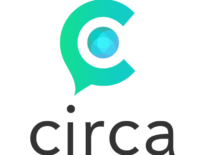In the News: John Farrell
April 18th, 2018
Media Outlet: Ensia Magazine
As we’ve documented countless times since the release of our electric vehicle report last year, these EVs are going to change the relationship that customers have with the electricity grid. Andy Balaskovitz, writing for Ensia Magazine, details the coming changes to the grid and how folks of all income levels and ownership statuses can benefit from the new technology.
For his story, Balaskovitz interviewed John Farrell, the director of the Energy Democracy initiative, explore Farrell’s contributions here:
For utilities to underwrite charging infrastructure — be it rebates for home chargers or paying for public chargers — regulators need to know whether all ratepayers and the grid benefit beyond the immediate impacts of fewer greenhouse gas emissions.
John Farrell, director of the Energy Democracy Initiative at the Institute for Local Self-Reliance, says the EV deployment level now does not hurt the grid — since EVs make up about 1 percent of the cars on the road worldwide — but concerns are likely to grow as more drivers charge their vehicles.
If companies incentivize or enroll customers in programs for charging during off-peak times of demand, however, “that improves the efficiency of the system and puts downward pressure on our electric rates,” Schefter says. “In an environment where other things cause costs to go up, we see electric vehicles as balancing those costs a bit.”
California — home to roughly half of the electric vehicles in the U.S. and where ZEVs’ market share increased from 3.6 percent to 4.5 percent from 2016 to 2017 — is proving to be a test case on infrastructure build-out and charging programs for other states, Farrell says. The American Council for an Energy-Efficient Economy recently highlighted Southern California Edison’s options for EV drivers that include tiered rate designs — a traditional billing plan based on energy usage — as well as time-of-use rates that are cheaper when grid demand is low. Southern California Edison is also among the few utilities exploring the potential of smart charging, which finds the best time for charging based on electric rates and grid demand. In this case, EV drivers have pricing options based on their flexibility to charge.
Two more California utilities — Pacific Gas and Electric Co. and San Diego Gas & Electric — are also piloting infrastructure programs calling for thousands of public charging stations.
…
Utilities are also piloting programs that automatically enroll customers in variable-pricing programs whose rates are based on real-time changes in grid load and allow them to opt-out, as opposed to requiring them to opt in.
“That’s probably the right way to do it,” Farrell says. “The great thing about it is we’ve been kind of dumb about the way we’ve used the grid so there are a lot of opportunities for savings.”
…





